From Redusers
“A little birdy just whispered something pretty remarkable into my ear. I cannot verify this AT ALL but rumor has it that Canon may be prepping to unveil a RAW or sRAW recording module for the 5D2, 7D, etc, which would record possibly via the CF card slot. Apparently they are being tested and used now.
Will post more details later if I get any. Don’t know about framerates or RAW vs sRAW. And again, this is totally unconfirmed, from a single “high-placed” source.”
Read More: http://reduser.net/forum/…..
thanks Tom
cr
|
When you purchase through links on our site, we may earn an affiliate commission. Here's how it works. |


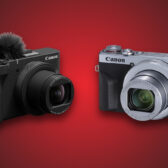
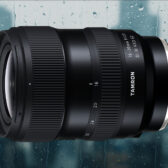
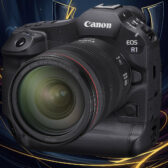
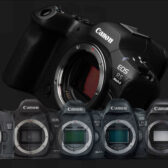
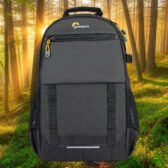
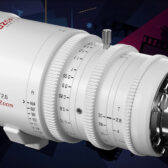

Sorry for not being as up-to-speed as I should be on video, but what would 4GB of RAW video get me? 2 minutes?
I could Imagine the 7D is fast enough for this. The 5D? Hmm, in sRAW perhaps.
Perhaps 2 min or such… if they can get it to use the entire sensor and get upwards to where the red 1 can shoot, this could be a red killer… Then again, for most professional film makers, most scenes, for any 1 angle and segment, is only seconds long upwards to a minute. People have short attention spans and so for the people they are targeting this to, it may not be a problem at all…
What codec would the camera use? is it completely uncompressed 8 or 10 bit files? You could shoot about 3 seconds (exaggeration) on a card. I think you are right, the 5D’s processor couldn’t handle all that data at 30 fps and even with the 7D’s dual processors, that is a lot of data! I would like to see a better compression than H.264, but uncompressed video probably isn’t the way to go on such a small camera.
Presumably the “RAW video” would just be the normal video-sized frames, which is significantly fewer pixels already than an sRAW frame.
In any case, the number-crunching-dependent part of shooting RAW is *less* than JPEG. It takes more processing power to generate a compressed JPEG (or frame of video) than it does to just shuffle the data straight onto the card as a RAW. The reason that shooting RAW tends to be slower is because of the amount of data–I.e., it’s limited by the speed of the storage system, not the processor.
Assuming this rumour’s true, presumably the add-on module for RAW video is just a writable media device that’s significantly faster than a compactflash card.
can it write to the card fast enough???
cpu is not the issue, this would be easier on it, but again, can it write to CF cards fast enough.
and although i didn’t think about the numbers but if it now does 4GB per 12 minutes wouldn’t this shoot like maybe 30 seconds at most per file?
Allan, I like with what you talk! That makes sense, but file sizes are going to be HUGE! I would guess they will limit to shooting 2K and lower, but still… HUGE! I know it is just a rumor, but I am already dreading the post workflow. I had to suffer through the same thing when the RED ONE was released.
Anyway, this will be interesting to follow!
I’d rather have full HDMI output without the overlay but I’ll have to wait and see where this is going as far as sRAW/RAW video format. Could be a sign Canon is developing a movie indutry video format to go after RED.
It sounds to me (i.e., when they say “recording module” and not “firmware upgrade”) that it’s not going to be recording to a card. It’s going to be recording to something else (presumably a hard drive or even mini-RAID like the Red uses) using a widget that just plugs into the card slot.
The idea of pumping out 30FPS of uncompressed 21 or 18 megapixel RAWs is kind of absurd, but the idea of pumping out 30FPS of uncompressed 1080p is a lot less so.
1920 x 1080 x 12bit x 30fps =~ 90MB per second, assuming no compression whatsoever, and presumably there will be some sort of (lossless) compression that’ll take that down. Compare this to the 5DII’s normal shooting rate of 5616 x 3744 x 14bit x 3.9fps = 136MB/s. The limiting factor there is buffer space, which I assume is what this “recording module” would help with–giving the camera a channel to storage fast enough to handle more than a few seconds of raw video.
maybe a grip attachment?
Am I wrong or he’s talking about something *connected* to the CF card? And transferring data somewhere else, I suppose
Luc
Or better, a hard disk recorder connected to the cf card
I don’t think Video-RAW will come to 7D oder 5DMkII. Why develop a complex CF-adapter for a video capable *DSLR*, when there will be a “real” camcorder with APS-C sensor which will probably have this technique integrated?
Seems to me that all this technology would be better suited to a dedicated video camera layout. Full frame 35mm RAW, on board drive or bank of memory cards, real audio capabilities, using existing Canon lenses as well as a few new cine style lenses for serious work… price it around $8K, same as a new 1Ds, and watch the orders roll in. True cinema quality for the price of a great DSLR, wow! Hopefully the 1Ds would then be priced a bit lower than $8k.;)
I think it s like this, yes. “_via_ CF card slot”…
Adobe is working on CinemaDNG which of course is or will be available in Premiere & AfterEffects. It’ll be interesting to see if this will be added into Lightroom or if a new product will be developed to process these files, maybe something similar to Apple’s Color?
Here’s the link:
http://labs.adobe.com/technologies/cinemadng/
Canon makes it’s money through lenses. Delivering this product makes tons of sense. Undercut the competition and gain a whole new market for their already successful lens line.
100% acknowledge. But: “true cinema quality” equates APS-C. A 35mm still image is bigger than 35mm movie image (still image is lengthwise, movie image crosswise).
Ok, 70mm film again is different… ;)
The problem in the workflow will be what editing suites will work with the new codec. Look how long it took for AVCHD to get into all the editing programs? I’m guessing Edius will support it fairly quickly as Canon ships some AVCHD camcorders with Edius Neo, but we could be waiting a while for Adobe and Apple to add support for it. I supose they could provide support in Canon’s Digital Photo Professional and encode it to other formats for editing, but that would slow workflow down – I hate having to convert before editing.
Because they make a lot of money selling 7D/5D2 cameras and all the lenses and accesories that for camcorders which are sales you dont get selling camcorders.
The wet dream of videomakers has always been to get the film-look, and 24f and even 24p still looked like video even on the most expensive camcorder. In short, “real” camcorders suck compared to the look you can create with a DSLR.
Guys, my source tells me this is definitely an external RAW RECORDING DEVICE of some kind. It does not go to CF cards at all.
As far as I understand it now, the “device” is a stand-alone recorder module that receives “uncompressed” sRAW data at 1080p from either the CF card SLOT (via some adapter cable I assume), or from HDMI, or both.
It’s possible that this recorder could even do 60fps if uses a very fast SSD, for example. Who knows, maybe the 1D4 will shoot high speed 60fps? I hope so!
We’ve also heard those rumors…
– MEANWHILE, WE KEEP CALLING CANON and doing their Survey
It really wouldn’t take much to make the DSLR video friendly. If they added a flip out to the side swivel LCD and some better audio features it’d be rocking, especially with all the new stabilizers, shoulder mounts and grips coming out from Redrock, Varizoom and the like. Redrock even has a follow focus attachment for DSLR lenses already. Prosumer camcorders are dead.
Yeah, even the sensors in Canon’s more professional (4-digit price range) camcorders are just 1/3″ in size, that’s even smaller than in most compact cameras. I can understand any videographer who drools over video-DSLRs…
1 terabyte hdd and you can record a lot ;)
I forgot to mention. The same source claims that the 5D2 will get a firmware update “to match the 7D’s framerate and resolution.”
Obviously I have no idea if this is true or not, but it makes sense that if Canon is making an sRAW recorder for the 5D2, they would give it 24p.
Exactly – I don’t want a bigger camera. I just want a DSLR with a couple more audio features and maybe a 2 card memory system so I can keep rolling.
And anyone who says “you can’t get serious work with the 5D” needs to wake up and keep up with the rest of us before we leave you behind along with IE 6.
or they can stay asleep, more for us! lol
I’d be happy with someone at Canon getting off their arses and write bit of file splitting code so we could record up to the card size and not be limited by fat32 4 gig file limit. If Marantz can do it, so can Canon.
merry x-mas :D i hope its true!
.. maybe we will know more on 29. september
We were already told something similar months ago, so I guess you are probably right.
Canon is possibly thinking on competition with some RED models.
*drools*
I hope it’s true!
Allan, great points. If I can just add some other thoughts…Solutions for vRAW files…
Firestore (already used to store uncompressed video) and similar drives will solve the problem of huge storage, but keep in mind also that cards are getting bigger and faster almost every month. I can’t see it being nearly the problem that Red One video is.
AVCHD takes a long time in software because it is so compressed. Presumably, the vRAW (if I can coin a term) would take no longer than uncompressed video normally does.
Cineform would solve the *other* problem — i.e., real time editing — but again it would do so in a manner similar to what’s already done with uncompressed video.
cheers,
Chris
I hope if the 7D and 5D get raw, the T1i will at least get manual exposure control and a new frame rate for 1080. it’s only fair if they can do raw, we can at least control the light coming into our camera!
This would be quite great to see I’m totally down for it. Recently went to an HD EXPO where Vincent Laforet spoke on behalf of Canon about doing video on SLRs. He said Canon is holding off 24fps in FF body for next camera iteration which I thought was an interesting and better move on their part. But who knows! I for one can’t wait to get my 7D. If they do however put 24p/72060p in the 5DMK2 I’d definitely be interested in getting one.
Full resolution video raw? Awesome. BTW, fat32 has almost no limit how big a single disk can be, just the clusters will be huge but it is not a problem though because the files will be large so not much space is wasted.
“Presumably the “RAW video” would just be the normal video-sized frames, which is significantly fewer pixels already than an sRAW frame.”
True, RAW video meams no video codec (eg H264, xvid, vp6, mjpg …etc) has been applied to the frames in order to compress the similarity between successive frames, there is also no compression applied to each frame on its own. From the point of view of someone shooting video in order to grab frames later, this is very interesting because every frame is saved as if it was a 1920×1080 pixel photo (now is it [the frame] a JPG or RAW photo? I am not sure. The sizes of a RAW video clip is the most horrible size you’ll ever see, a file that is well under 100MB when compressed can be easily over 1GB when it is still RAW. The motion JPG codec (mjpg, used in old digital cameras does only) is similar to but not as good as RAW video, it doesn’t apply compression between frames, but it does apply JPG compression to each frame separately.
the solution in two words: mediacoder + K-Lite
Google on these 2 freeware programs to download them. Once you install them on your PC (not sure about mac), you’ll be able to open many video/audio files (incl. AVCHD) that were impossible to open before thanks to the K-Lite’s codec pack, and you can also convert among video and audio formats (almost from any x-to-y format) thanks to mediacoder.
Yeah, I know… That’s why I was talking about their (yet unannaounced) *APS-C* camcorder, which I personnally expect soon to come…
It’s a pity, but I don’t expect, they’ll ever release a manual exposure firmware for the T1i/500D. But I was quite surprised, when they released it for the 5DMkII too, so maybee there is still hope… :)
You mean not raw but more than 8 bits per pixel?
Raw video should be a crop area with a size of 3840×2160 sensor pixels. Here you have 1920×1080 red and 1920×1080 blue pixels scanned.
Windows thinks, fat32 has a limit of 16 GB. Linux is formatting up to 120GB. Behind that, you really run into trouble.
Canon should offer ext2 (open and free file system) as well. ext2 is faster, less cpu consuming and available for all operating systems.
http://e2fsprogs.sourceforge.net/ext2intro.html
ext2 hat no file size limit of 2GB on 64-Bit Operating systems like Linux and MacOS. The newer ext3 has a journal of disk operations. This is more secure but lower bandwidth on write operations and may reduce the lifetime of cf-memory-cards.
“1920 x 1080 x 12bit x 30fps =~ 90MB per second”
That’s for a monochrome image, or a bayer-pattern image (which would not make a nice 1920×1080 RGB image).
The datarate for an RGB uncompressed 12-bit HD data stream would be:
1920×1080 x 12bit x 3 channels per pixel x 30fps / 8bits per byte = 280MBytes/sec!
I can’t follow you there, in particular about the video being cropped?!? this would mean the field of view not the same as what the camera give you when shooting stills, never heard that it is like this on any dslr. 8-bits or not, i am not sure either! but i believe that a frame grabbed from a RAW video clip is not at all the same as the RAW of still photo’s. ie if you screw the exposure or white balance when shooting a RAW video, you won’t be able to adjust it as if it were a RAW photo. RED-one’s RAW video may be an exception, but in general raw video simply means there is no video codec and hence no compression.
opening to play them is one thing, editing them efficiently is another. I dont want to spend hours after a shoot converting files for editing. Adobe, Edius and most of the others can edit AVCHD now. My point was if Canon comes out with some new RAW video format it could take a while for it get efficient from a workflow standpoint.
I’ll take my DSLR and EF lenses over an aps-c camcorder. Sticking a larger sensor in a camcorder wont give it the same look and control over DOF I get now.
I’ll take my DSLR and EF lenses over an aps-c camcorder. Sticking a larger sensor in a camcorder wont give it the same look and control over DOF I get now.
PS: Wanted to add good post!
but if raw video means like i said before: uncompressed, codec-less video, then there is no problem at all any video software can handle it better than a video with codec (because codecs require support). That’s the opposite sitution of raw photo’s compared to JPG, because raw formats
are propritary (.CR2, .NEF, .AWF, .ORF, .PEF …etc) they are not readable/editable by any photo software like ubiquitas JPG.
but if raw video is like i said before is codecless, uncopressed video, then there is no such thing as “Canon’s RAW video fromat” versus “Nikon’s RAW video fromat” in the same way like .CR2 & .NEF are two different proprietary raw image formats. Lack of video codecs makes your life easier as far as software support is concerned. I use many video software programs and almost each one of them has one or few codecs that it doesnt support but none has a problem with RAW video. Now if Canon is planning that each frame becomes a .CR2 file on its own, then that’s not what is conventionally called RAW-video, Canon should use a different terminology.
oooops, sorry for the repetition I edited what I wrote ad forgot to delete the paragraph on the top, read just the second para.
almost anything that is different from natural human vision is considered image quality flaw (vign, CA/PF, distortion, noise….etc), except out-of-focus-blur (when it is used to make the subject stand out …etc). personally i don’t like it because it’s unnatural. Instead of getting rid of a distracting background by out-of-focus-blur, why not get rid of it by out-of-frame-composition? the background is part of the scene, you should not hide it.
anyway am 100% with you that FF is better than APS-C for other aspects of image quality.
Yeah, think about all the processing it would take to go through 30 full-sized uncompressed frames per second. Not gonna happen.
Check the latest Magic Lantern developments – getting close to full HDMI output on the 5dm2.
The problem with uncompressed video, especially uncompressed 1080p HD, is most workstations can’t handle the editing even if the software can “open” it because the through put is massively intensive. I’ve done it on various systems, and even quad core machines struggle with uncompressed SD, HD is way more so, without very fast RAID drives, tons of ram, and a dedicated video editing board such as Matrox, Blackmagic or Grass Valley. You can forget laptops.
It’s also unclear what this rumor is describing, whether it is uncompressed or something like RED’s Codec, but even then you really need the RED Rocket board to edit 4K in real time – a nice $4750 add-on to your system.
We’ll see.
Not without a dedicated board like RED Rocket for the RED Codec.
Oh good! I was hoping he’d get that going.
FAT32‘s cluster number should be within 65526 to 4177918, maximum sector size of every cluster 64k which can be 256k if specified when formatted, so 4177917 x 64k = 267 g, if using 256k sector, it can be extended to 1TB. Using Windows command line and type in “format /?” you will find out above statement.
Windows can not read ext2, that is the problem. I think that is the limitation.
Maybe this has got a bit garbled in the Japanese whispers style translation.
Some of it sounds a little far fetched to me.
What Canon could easily do is enable a clean 1920 x 1080 feed from the HDMI port via a firmware upgrade and then release a solid state video recorder that bolts to the bottom of the camera (grip style) that plugs into the HDMI port.
It could have some integrated controls for start/stop etc similar to existing grips.
It could have a mount for support rods and a rosette for a handgrip or a video out for a video viewfinder.
Who knows?
The RAW would likely find a use in professional cimematography where they can afford $$$$ computers, and often send digital files to outside companies to process.
Its of little practical use to ordinary photographers, but if you are making a motion picture and want to eliminate compression artifacts, then it would strike yet another blow into RED sales for certain applications. The 5D MK II is not a video camera, but for the price, it can do many things that don’t need a $100,000 plus setup.
Sounds like a logical next step. Processor and storage speeds keep increasing exponentially, so it doesn’t sound like a significant challenge in the near term. I wouldn’t be surprised to see it grow to 30 fps and beyond in a few years with even larger pixel counts. Nothing stopping Canon from putting immense high speed buffer storage in the cameras so that the traditional bottlenecks of processing and storage can be mitigated. Hard to predict the future but there may be add-on modules that can be bolted on like the battery grip to increase the processing and storage just like we bolt on servers to a rack today.
S Kumar
> Sticking a larger sensor in a camcorder wont give it the same look and control over DOF I get now.
???
Of course it will. Ok – when you have the 5DMkII, you can achieve an even smaller DOF…
I don’t know, if you ever filmed with one, but the handling of a camcorder is much better for filming than the one of a DSLR. Don’t get me wrong, I love the new video feature of DSLRs!
F this turns out to be true… it seems clear to me that it is a component that we be developed for the likely forthcoming APS-C video camera, but will also connect easily to the 7D, 5DII and other DRSL cameras with video.
That way they will be creating a line of low to high priced/speced cameras that all have a common RAW format (at an additional price).
It would kill off alot of RED business, I think.
Imagine a 5DII that could capture 2/4k RAW at 1-60fps. At a price of around $5k ($2500 for camera, same for the recording unit).
Speculation sure, but not that unlikely.
The recording length limit is intentional.
It’s to get around tariffs that apply to video cameras in Europe.
Yeah I don’t believe that. Even if it was true and not a rumor forum spread myth, that’s no reason to limit it for the rest of the world. They put Rebel on USA cameras so they can deliver cameras with slightly different firmware settings turned on too. But I still believe the tariff idea is a myth. Canon themselves blame it on the CF card’s fat32, not tariffs.
Try holding you finger up a foot away from your face and look carefully at it. Did you notice that the background is now out of focus. Our eyes are like a 8mm 1.0 Lens with amazing macro focus. Bokeh is very natural!
I don’t know THAT much about high end video editing/workflow but I do have a technical photography and IT background, now regarding the cost of a computer that can handle a raw video worflow, to me it seems more or less similer to a high end photoshop work station with the simple addition a blackmagic or some other video board. Maybe it’s just me, but doing composites with multiple smart objects, multiple 21 megapixel files, all in 16 bit is very demanding as it is, so if you want to go video, just add another raid5 and a dedicated video board and your set.
I’d dare say that canon won’t want to make the 5d TOO strong in video, just because I expect them to want to force people into buying another product to do video at the higher end, how ever I’d say it would be a very smart move on thier part to make a video system based around the EF lenses as long as they find a way make them perform AF better in video and add some with seemles apertures.
As for the raw video thing, a cf card slot adapter to me, would likely not fully solve the issue of data throughput, the 5dII like anything canon make that isn’t 1 series, has costs cut to make it more affordable at the expense various things, one such area is the speed at which it writes via it’s cf card slot, it can be, when compared to 1 series with the same speed media, slower at writing files.
As for processing, from what I know, when ever your outputting a file at lower then the sensors native resolution it’s downsampeling from raw data of the sensor, either to sRAW, jpg or even the video files… and I suspect that to make it output some kind of raw video, after downsampeling, some dedicated hardware in the camera itself might need to be involved.
I still really hope they do improve the already impressive (all things considered) video of the 5dII and soon to be 7d by what ever means they can, but I suspect we’ll see a successor to the 5dII before they get raw video in it.
look at a random sample of bokeh photo’s, if the sample is truely random, it won’t include a high % of photo’s with the subject 1ft away from the camera and background at infinity. now look at the other photo’s (the majority), and ask yourself if your eyes were where the camera was, would you see the scene the same way it looks in the photo? sure not. and even if the subject is 1 ft from your eyes, the moment you try to check if the background is blurred or not your eyes automatically change it’s focus. so human eye blurs rarely compared to camera lenses and when it does the blurred background is out of your attention. doctor your own thinking befoe doctoring others eyes.
assuming same bits per final pixel as in picture mode, just less pixels per frame and more frames per second, each 1080p frame takes 10 times less info than a 21MPix picture (5616×3744)/(1920×1080)
therefore, using dpreview numbers for the 5D2 as reference, 21MB of RAW data per 21MPix picture mean 2MB of RAW data per 1080p frame, so 62MB of RAW data per 1080p second at 30fps
that solves the first question: how much RAW video can I store in my memory card? with these linear calculations, just over 16 seconds per GB
and for the other question: is this camera even able to do this in theory? while writing RAW pictures on its buffer, the 5D2 is able to take 3.7fps; with the same 10x ratio as before, that means it would be able to take video in 1920×1080 resolution at up to 37fps, and in particular it should be able to take it at 30fps
what’s the problem? that buffer is too small for video: looking at the dpreview numbers, it looks like it is 256MB, able to write at more than 80MB/s
that would run out in 4 seconds
after that, even a really fast card will not be enough: after the buffer is full, on the 8 GB Lexar Pro 300x CF card they test in dpreview, they only manage 1.5 fps, so you could only get 15 fps 1080p video there: not enough
conclusion? attach a bigger, faster drive, and the 5D2 has the processing power and I/O performance to record RAW 1080p video at 30fps; I guess this, plus a firmware update, is what these rumors could come to
note 1: firmware update plus 600x superbig card is not enough, the file size limit of FAT32 would be a big pain
note 2: I don’t know which is the problem with 24p in the 5D2, so I don’t know if RAW should unlock this too
note 3: the only remaining thing is: how efficient is the row/column skipping process that these canon DSLRs follow when capturing video? if the whole sensor has to be read, and then most information is discarded, and there’s some performance inefficiencies in this, then my numbers about feasibility are useless
Batch processing?
I recently bought 7d and I get to admire what we can have in our hands in terms of technology these days. But I can surly see the virtues of having uncompressed files for the post work. In film making, all things aside, just the size of DSLR itself is revolutionary translating your ability to shoot at spaces never thought possible before. The key still is how well it can be mixed with 35 mm stock and for that the files maleability in post as wel as PL mount adapter for serious lenses will truly makeit a genuine film making tool. And if red can do it then I believe Canon can too. And I think they soon will.
Many people have alos become fans of Paul Smith Shoes since they came into the market. I also one of them , I very like Paul Smith Wallets and <a Paul Smith Belts,It designs very good.
Get my 7D next week